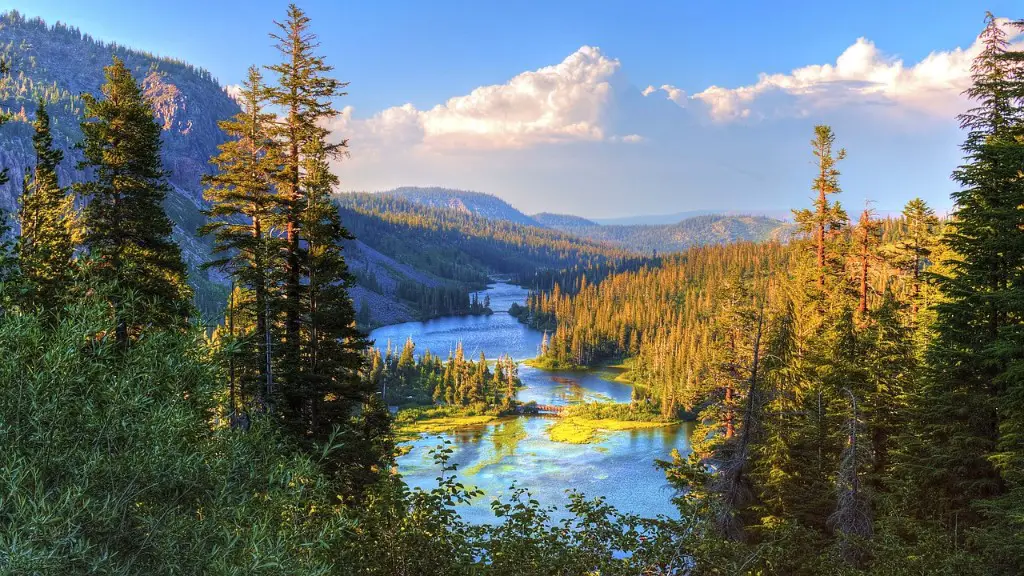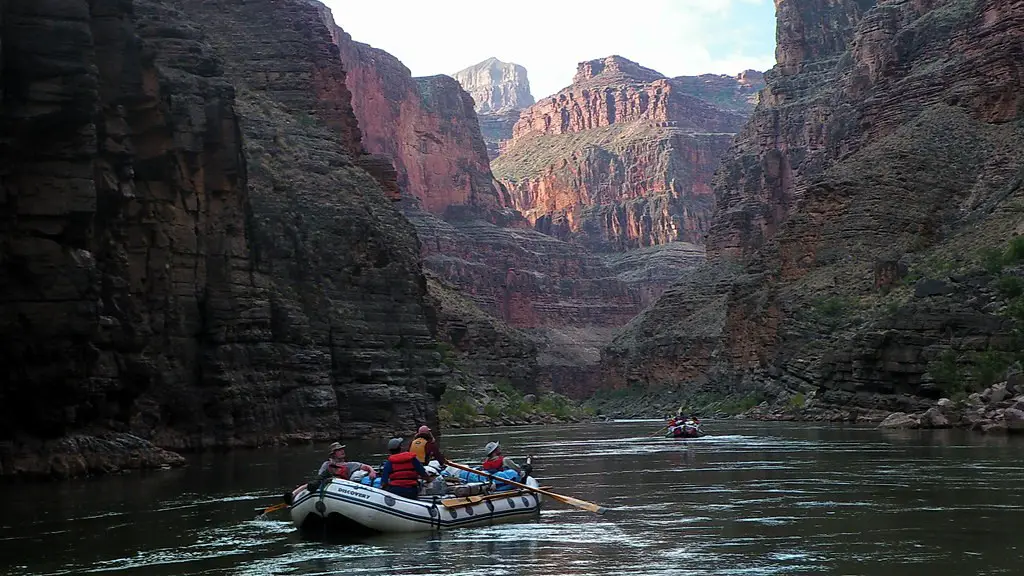Colonization of the Mississippi River Region
Colonization of the Mississippi River region in North America began in the late 1600s when French and Spanish settlers started buying land from Native American tribes. The purchase of this land significantly changed the landscape of the area. It eventually became part of the United States in1803 and the region quickly became a hub for agriculture, fishing, industry, and commerce.
Just two years after the passing of the Louisiana Purchase, which acquired from France a large portion of land west of the Mississippi River, the United States government offered military protections to groups of settlers and traders in the area. The various treaties the government made with Native American tribes carved up the land and it was eventually ceded to the United States of America.
The land acquisition process around the Mississippi River was an extensive and complex one. It involved extensive negotiations with Native American nations, as well as with the French, Spanish, and later Mexican governments. Due to the importance of the Mississippi River to all of these countries, as well as the strategic interest of the United States to control the river, tremendous amounts of resources were allocated to this effort.
The land was acquired through two main methods: treaties and congressional acts. Treaties were negotiated with the Native American tribes who held much of the land in the Mississippi River region. These treaties gave the United States control of the land in exchange for various goods, such as money, clothing, food, and other items.
In addition to treaties, the United States also passed several congressional acts in order to acquire more land. These acts authorized the government to purchase additional land from Native American tribes, sometimes for cash payments and sometimes for goods, depending on the terms of each treaty.
The purchase of land around the Mississippi River was a significant event in American history. It marked the beginnings of a new era for the United States, as its western border was now established, and it opened up new opportunities for trade, transportation, and development that would play a major role in the nation’s future.
Negotiations with Native American Tribes
The negotiations with Native American tribes to acquire land were often difficult, as the tribes had a deep connection to their land and did not want to lose it. The United States government offered goods and money to some tribes in exchange for the land, while it forcibly removed other tribes from their lands. In either case, the United States held all of the power in the process, and the Native Americans rarely had a voice in the negotiations.
The removal of Native American tribes from their lands was an especially contentious issue for many people, both Native Americans and non-Native Americans alike. Native American rights activists have argued that these treaties were unfair, and that the land acquisitions were done in a heavy-handed way that disregarded the Native Americans’ right to self-determination. Supporters of the land purchase argued that it was necessary to secure the new nation’s borders and to expand its economy.
The negotiation process also highlighted the power imbalance between the Native Americans and the U.S. government. The United States was able to dictate the terms of the treaties and the Native American tribes had no choice but to accept them. This power disparity persists to this day and has caused tension between Native Americans and the U.S. government.
Although the treaties were often unfair to the Native Americans, it is important to remember that many of these treaties helped establish the borders of the United States. Without these treaties, the country would look much different today.
Once the land was owned by the United States, it was allocated to the settlers and traders who had been living there before the treaties were signed. Many of the new land owners quickly established a system of sharecropping, which allowed wealthy landowners to lease their land to poorer families in exchange for a portion of their crops. The lot of these sharecroppers was often difficult, as they were little more than tenant farmers with few rights. This system of sharecropping is still in place in many parts of the Mississippi River region today.
Sharecropping was also a source of exploitation for African-American families. Although African Americans had been granted freedom from slavery, they still faced discrimination and had limited economic opportunities, and so many turned to sharecropping as a way of making a living. This system provided them with some economic security, but at the cost of their freedom—they were still beholden to the landowners, who had the power to evict them from the land at any time.
Although the sharecropping system provided some economic stability for many African Americans, it also perpetuated cycles of poverty and inequality. This system of exploitation continued for decades until the Civil Rights Movement helped break down racial barriers and allowed African Americans to gain access to better economic opportunities.
The purchase of land around the Mississippi River helped the United States to expand its borders, but it also resulted in the displacement of Native American tribes and the exploitation and oppression of African Americans. Despite these issues, the land acquisition was an important event in the history of the United States and it helped to shape the country we know today.
Environmental Impacts
The purchase of land around the Mississippi River also had an impact on the environment. Although the area was mostly rural and undeveloped when the United States acquired it, the push for economic development quickly led to deforestation, soil erosion, and pollution. These issues have continued to plague the area to this day, and many experts argue that the United States government should have done more to protect the environment when it acquired the land.
The proliferation of industry and agriculture in the region has been especially damaging to the environment. Much of the area has been overfarmed and overlogged, and many of the native species of plants and animals have been pushed out. In addition, the extensive use of fertilizers and pesticides has caused pollution of local waterways, and this has resulted in a decline in fish and wildlife populations.
The environmental degradation of the Mississippi River region has been a major concern for environmental activists, who argue that the United States government should do more to protect the area’s natural resources. They believe that it is possible to balance economic development and environmental protection, and that this should be a priority for the government.
In addition to environmental degradation, many experts also point out that the purchase of land around the Mississippi River had an impact on the culture and history of the area. Native American tribes were pushed out of their lands, and many of their traditions and cultures were lost as a result. Although there are still some Native American communities in the region, many have been unable to maintain their traditional lifestyles in the face of encroaching development.
Effects on Local Communities
The purchase of land around the Mississippi River also had an impact on local communities. As the region became more developed, small towns began to pop up along the river, and this led to a rise in population. As the population increased, there was an increased demand for housing, jobs, and other services, and this created a boom in the local economy.
In addition, the influx of people also led to a rise in crime. Many of the newcomers were poor and desperate, and local authorities had difficulty in keeping up with the growing crime wave. As a result, the communities along the river were often fraught with violence and crime, and the quality of life declined for many.
In more recent years, the rural areas around the Mississippi River have experienced a resurgence in popularity. Many people are attracted to the area’s rural beauty and its affordable housing. In addition, the rise of the “slow food movement” has led to an increased demand for local produce, and this has led to an increase in the number of farms in the area.
Today, the purchase of land around the Mississippi River continues to affect local communities. This is a complex issue, with many different factors at play, but it is clear that the purchase of this land has had a lasting impact on the area and its people.
Impact on Global Relations
The purchase of land around the Mississippi River also had an impact on global relations. By controlling this land, the United States was able to establish a presence in the region and expand its borders. This had far-reaching effects, as it meant that the United States would now be able to assert its influence in the region, and this has been a source of tension between the United States and its neighbor countries.
In addition, the purchase of land around the Mississippi River helped the United States to strengthen its economic ties with other countries in the region. The area’s resources allowed the United States to become one of the leading exporters of commodities like timber and cotton. This enabled the United States to further its economic might and increased its power on the world stage.
The purchase of land around the Mississippi River played an important role in the history of the United States and its relationship with the rest of the world. It helped to expand the borders of the United States and allowed it to become a major player in world affairs. In addition, it enabled the United States to establish economic ties with the other countries in the region, and this has had a lasting impact.





